If you are planning a trip in Oman with the current change in weather to a pleasant coolness, you must not miss the ancient forts of Oman. The forts of Oman offer glimpses of a group of strong people who established themselves amid warring tribes and colonial attacks. These forts are powerful instances of architectural engineering that wow the world with their dizzying heights, the strength of endurance, and awesome planning to outwit the enemy.
Each fort in Oman has distinctive features that make sure that an invading force could be overcome easily. About 1,000 forts lie scattered hither and thither amid this beautiful Arab country. Here are some of the best forts of Oman that are well worth a visit this fall.
Nizwa Fort Oman
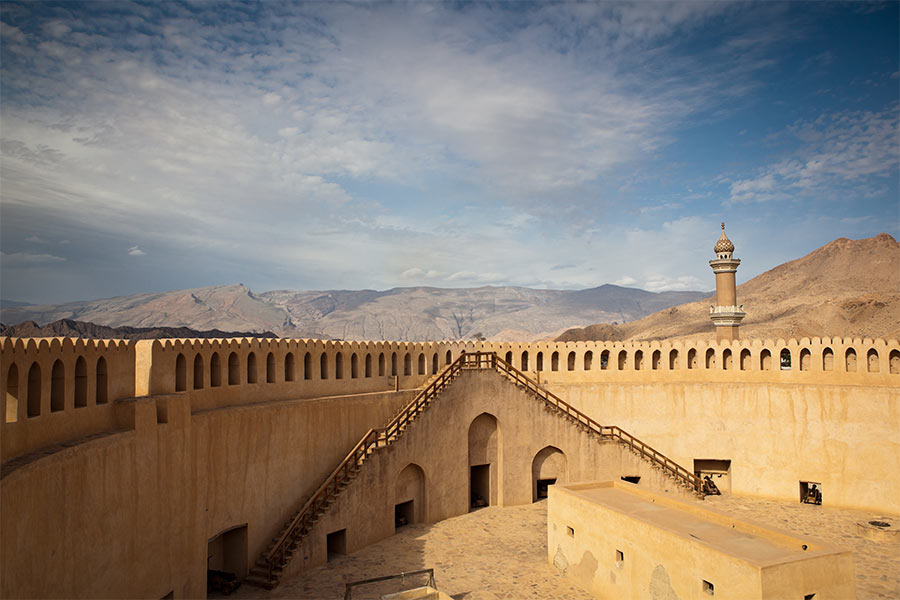
The Nizwa Fort Oman, also called Husn Al Heem, is the oldest castle in Oman and is located at the entrance of Wilayat Nakhal in Wadi Ar Raqeem. The Nizwa Fort is the biggest among the forts of Oman and was used as a vantage point to defend the town during times of war. It is best known for its extraordinary architectural style that stands out from the other forts in Oman. Walk into this vast area in Nizwa Oman, and take a trip into the past. Complete with a green oasis and a blue-domed mosque nearby, the fort encloses the Nizwa Souq, a local market for everything handy from tiny knick-knacks to the butcher’s shop. Long winding alleys within the fort and the souq area can be confusing if you don’t pay good attention. This is the most visited and best fort in Oman on account of its unsurpassable beauty and structure.
The fort is designed on two floors. The ground floor consists of an inner courtyard, a date storage room, an ablution room, exhibition halls, an armoury room, and a prayer room. There are 25 traditional rooms on the first floor and five on the third floor. Presently, you can also find a coffee shop, a gift shop and a palm house on the ground floor.
Khasab Fort Oman
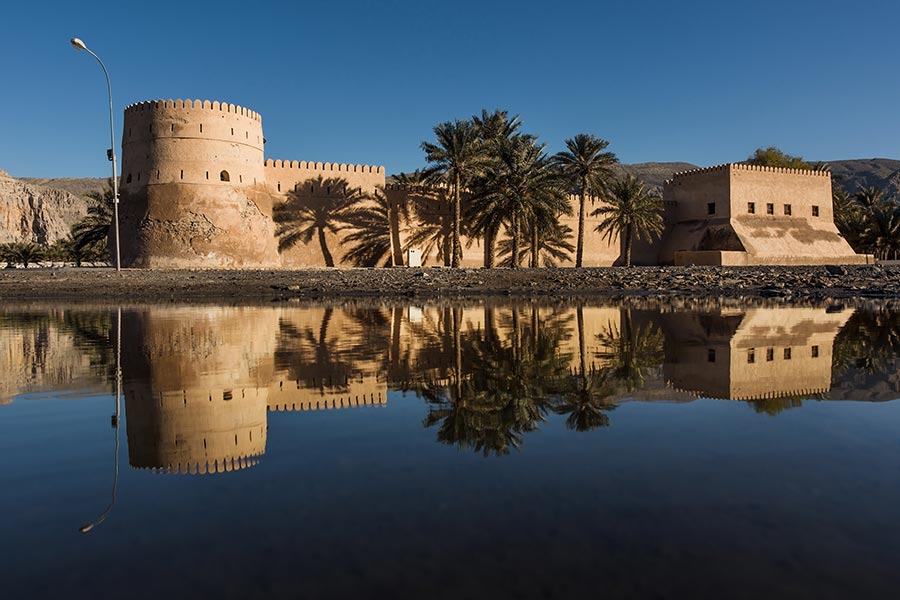
Khasab Fort Oman, located in Khasab, Musandam, is an ancient stronghold placed near a ragged mountain and opening towards the blue sea. The Portuguese built it in the 17th century on top of an ancient fort. They aimed to take over the Strait of Hormuz and kept the Khasab castle as a place for supplying dates and water to the Portuguese ships. But Omanis ousted them in 1624 and used it as a residence for the Wali of Khasab and also as a city prison.
The renovated castle now houses an exhibition on the history of Musandam. The old fort was retained in parts and you can notice them in the stone blocks different from the Omani architectural style. Take a glimpse into the bits and bobs of 19th-century life in Khasab Oman and view the ancient artefacts, canons, and traditional dhows displayed there. A model of Bayt Al Qefel is built in the courtyard of the castle that displays the types of boats that are well known in Musandam. You can also view inside the courtyard of the castle, three traditional boats named Battil, Mashuwwah and Zaruqah. Khasab Castle is a must place to see in Musandam.
Nakhal Fort Oman
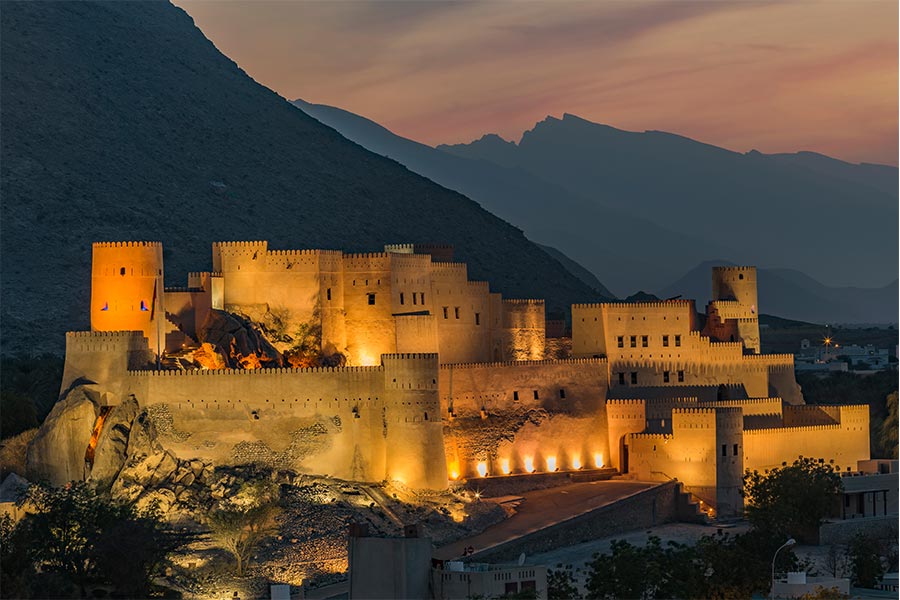
Nakhal Fort Oman is a 17th-century defensive fort built by Sassanids in the pre-Islamic period. Later, it survived the Ya’arubah dynasty and was restored many times down the centuries. ‘Nakhal’ in Arabic means ‘palms’. No wonder, you will find it amid a panoramic view of lush green date palms and the blue mountains. Built on an uneven rock, it was a vantage point to observe the entire oasis and protect trade routes. You can still spot some rocks forming part of the inside rooms.
Walk-in and view the traditional rooms of Wali and his family. Glance through the museum inside. You will find exhibits of historic guns, canons, traditional furniture, handicrafts, and artefacts. But nothing would match the awe-inspiring view from the rooftop. Prince Charles was here in 2003. The Nakhal fort also hosts a goat market every week. Nakhal Fort is a significant fort in the whole Al Batinah region.
Bidbid Fort Oman
Bidbid Fort Oman is well-known as an ancient castle that dates back to the 16th century. Located in the Wilayat of Bidbid, it takes about 35 min (51.3 km) via Route 1 and Route 15 from Muscat. The hanging bridge in Bidbid connects Muscat with the Wilayats of Al Dakhiliyah. A scenic wadi divides the region into two parts. You can find several freshwater springs from the Al Hamri mountains, which give birth to aflaj around the area.
Set amid a green grove of palms, the Bidbid castle Oman has a huge watchtower that stands high on a rock. A falaj winds around the placid castle set amid high walls. Palm tree trunks are used to support the fort’s roof. Known as one of the famous forts that defended the area, the Bidbid castle is undergoing renovation now.
Al Jalali Fort Oman
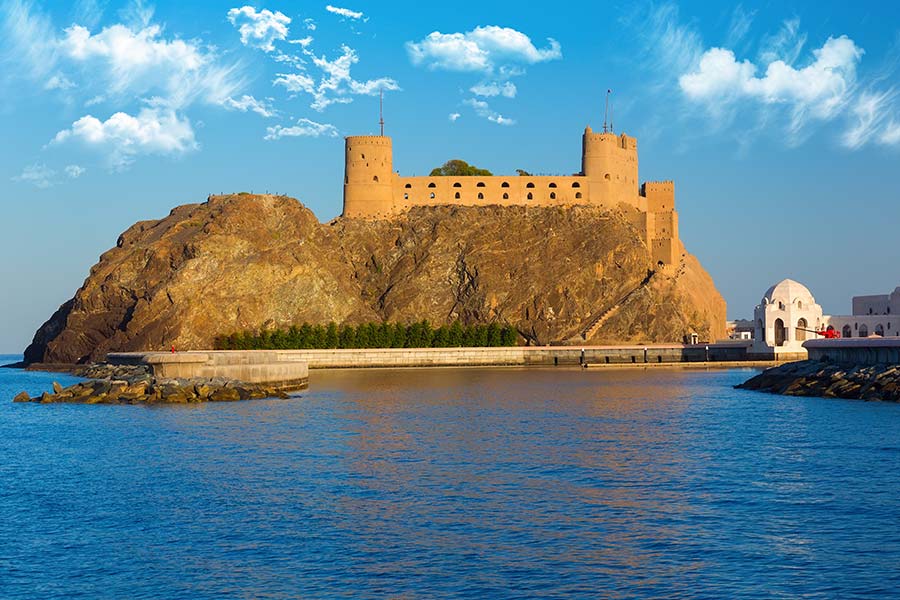
Al Jalali Fort Oman, also called the Ash Sharqiyah Fort, is located in the harbour of Old Muscat and overlooks the sea. ‘Al Jalal’ means ‘great beauty’, and the fort, no doubt, has a proud history to boast of. The Portuguese built this fort under Philip I of Portugal in the 1580s to protect the harbour after Muscat had twice been ravaged by the Ottoman forces. It fell to Omani forces in 1650. During the civil wars between 1718 and 1747, the fort was twice captured by Persians who had been invited to assist one of the rival Imams. The fort was rebuilt later.
At various points in time, Al Jalali served as a refuge or a jail for a member of the royal family. For much of the 20th century it was used as Oman’s main prison, but this ended in the 1970s. Fort Al Jalali was restored in 1983 and converted into a private museum of Omani cultural history. Walk into this museum to find exhibits including cannons, old muskets and matchlocks, maps, rugs and other artefacts.
Bahla Fort Oman
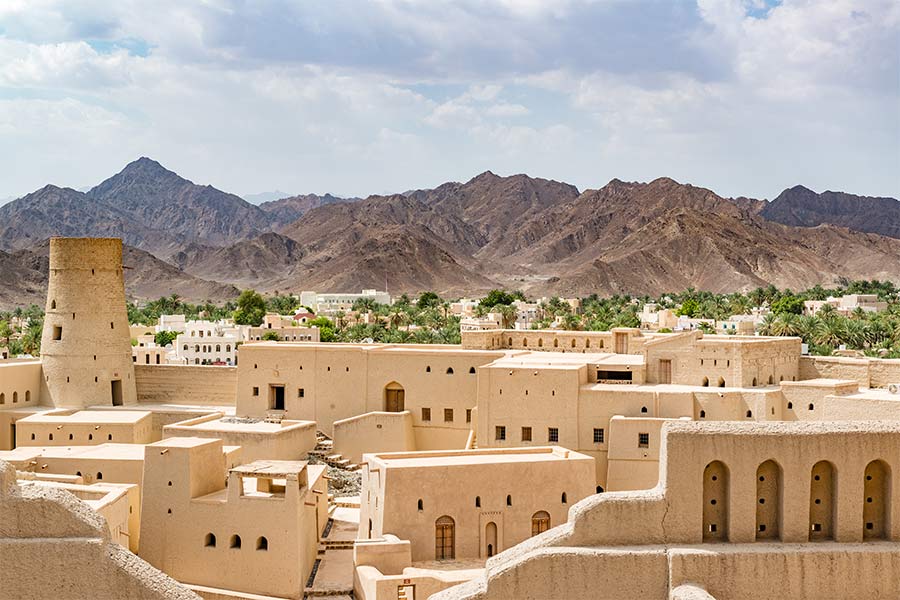
Bahla Fort Oman, in the Wilayat of Bahla in Al Dakhiliyah, is the only fort of Oman included in the World Heritage Sites List since 1987. Originally constructed in the third millennium BC with straw and mud bricks, Bahla Fort includes the Bahla Oasis with its traditional souks and ancient mosques. The oasis of Bahla owes its prosperity to the Banu Nebhan, the ruling tribe in the area from the 12th to the end of the 15th century.
The ruins of the huge fort, with its walls and towers of unbaked brick and its stone foundations, is a remarkable instance of fortified settlement in the pre-Islamic period. The oasis is watered by the falaj system of wells and underground channels bringing groundwater from distant springs. Bahla was the centre of Ibadism, a branch of Islam, on which the ancient Omani Imamates were based and whose influence can be traced across Arabia, Africa and beyond.
